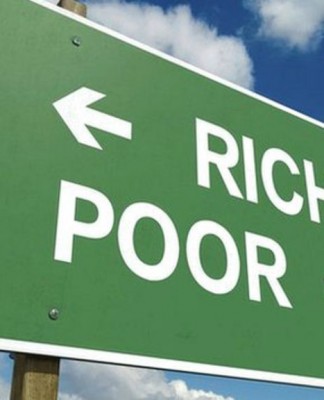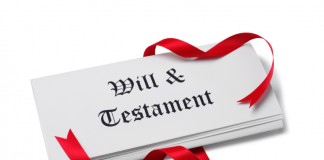For hundreds of years trusts have been used for succession and estate planning purposes. While numerous in structure and complexity, they all have the same basic principle: Under a trust, the owner of assets, the “settlor”, transfers wealth to a “trustee” to hold and administer for named “beneficiaries”, who may be family members, other individuals or organizations, or even the settler themselves.
There are important points to understand about what actually happens to the control of assets once they are placed in trust. Once moved into a trust, the assets are legally owned by the trustee for the benefit of the beneficiaries, but the precise terms of the trust are very flexible and governed by a trust deed that binds the trustee and sets out the specific terms under which the trust assets are held.
Trusts can be tailored to your exact needs, both now and as your needs change over time. Trusts have the flexibility to hold all forms of cash, securities, structured products and other bankable assets. In certain situations, trust structures may hold non-bankable assets such as residential and commercial real estate, art, boats, planes, and family operating companies which can be part of the overall wealth management solutions a family should look to incorporate into their planning.
These are some of the essential terms surrounding the establishment and maintenance of trusts:
Trust
A trust is a legal relationship between a trustee and the settlor by which the settlor transfers his or her assets to the trustee and which binds the trustee to administer these assets in the best interests of the beneficiaries of the trust.
Settlor
The settlor is the person who establishes the trust by transferring property to the trustee(s) to hold under the terms of the trust deed.
Trustees
The choice of trustee is very important because the trustee is the legal owner of the trust assets once they are placed in the control of the trust. The overriding duty of a trustee under the law is to take care of a trust’s assets in the best interests of the beneficiaries. A failure in that duty may make the trustee liable for a breach of trust and responsible for any resultant loss. In many common law jurisdictions, any individual or company may act as a trustee and take on the fiduciary duties and responsibilities of a trustee. Careful consideration of the trustee is essential as the settlor will transfer assets into trust to be administered by the trustee. It is important to ensure that the trustee is capable of administering the trust.
Beneficiaries
The beneficiaries are the person(s) selected by the settlor for whom the settlor wishes the trustees to hold the property. In the case of a trust set up primarily for family succession planning, the beneficiaries will generally be the settlor and his or her family, but they could also include a charity or other individuals or institutions. You can also create as many conditions as desired for the beneficiaries and upon such conditions the trustee can distribute funds in accordance to those wishes.
In other cases, the beneficiaries may be, for example, members of a company pension fund or a profit-sharing plan.
Trust Deed
A trust deed is a written document that sets out the powers and duties of the trustee and defines the beneficiaries and trust assets. The deed may contain specific provisions on beneficiaries’ entitlements, or it may leave this to the trustee’s discretion. These are usually referred to as “fixed interest” and “discretionary” trusts respectively. A trustee of a discretionary trust may be guided by a letter of wishes from the settlor. In addition, distributions or other decisions may require the consent of a person, such as a “Protector”, who knows the settlor.
Types of Trusts
One of the more common forms of trust used is a discretionary trust, which may be revocable or irrevocable. In its usual form, it provides the trustees with enough discretion to carry out their duties and exercise their powers, while taking into account changing family, business or jurisdictional circumstances. In contrast, fixed interest trusts define the interests of one or more of the beneficiaries in the trust deed. For example, a beneficiary may have a right to all of the income of the trust assets during his or her lifetime, i.e., a fully vested interest. Again, the trust may be revocable or irrevocable. It is also quite common to encounter a mixture of the above. For example, a trust might start out as a discretionary revocable trust, but upon the occurrence of a certain event may become irrevocable with defined interests in income for certain beneficiaries during their lifetimes, with further discretionary trusts to follow their demise.
Letter of Wishes
In administering a discretionary trust the trustee may receive guidance from the settlor. This usually takes the form of a letter of wishes addressed to the trustee. Although this letter does not form part of the trust deed and is not a legal document, it is intended to assist the trustee. Beneficiaries do not usually have any right to see this information, which is a private letter between settlor and trustees.
Protector
Some Settlors choose to appoint a Protector for their trust. The Protector may be a close family friend or advisor of the settlor. The Protector’s role is described in the trust deed. As the term suggests, the Protector ensures that the interests of the beneficiaries are safeguarded in line with the Settlor’s intentions.
About Richard Cayne
Richard Cayne is CEO of Asia Wealth Group Holdings Ltd., a London, UK Stock Exchange listed Financial Holdings Company. He is also the Managing Partner at the Meyer Group of Companies. A native of Cote St Luc, Montreal, Quebec Canada he currently resides in Bangkok Thailand and for 15 years resided in Tokyo, Japan. For almost two decades Richard Cayne has assisted families with high-net worth successfully plan for future generations.
















[…] Source: https://www.richardcayne.com/richard-cayne-meyer/preserving-wealth-for-future-generations-the-benefit… […]
Comments are closed.